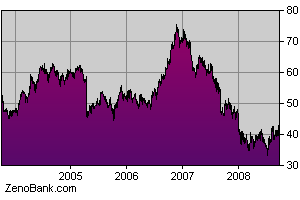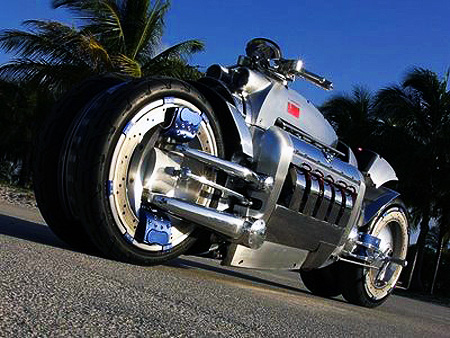
Harley-Davidson's association with
sportbike manufacturer
Buell Motorcycle Company began in 1987 when they supplied Buell with fifty surplus XR1000 engines. Buell continued to buy engines from Harley-Davidson until 1993, when Harley-Davidson bought forty-nine percent of the Buell Motorcycle Company.
[59] Harley-Davidson increased its share in Buell to ninety-eight percent in 1998, and to complete ownership in 2003.
[60]
In an attempt to attract newcomers to motorcycling in general and to Harley-Davidson in particular, Buell developed a low-cost, low-maintenance motorcycle. The resulting single-cylinder
Buell Blast was introduced in 2000,
[61] and was made through 2009, which, according to Buell, was to be the final year of production.
[62]
On October 15, 2009, Harley-Davidson Inc. issued an official statement that it would be discontinuing the Buell line and ceasing production immediately.
[63] The stated reason was to focus on the Harley-Davidson brand. The company refused to consider selling Buell.
[64] Founder
Erik Buell subsequently established
Erik Buell Racing and continued to manufacture and develop the company's
1125RR racing motorcycle.
[65]
[edit]Claims of stock price manipulation

Harley Davidson Inc (NYSE:HOG) stock price (source: ZenoBank.com)
During its period of peak demand, during the late 1990s and early first decade of the 21st century, Harley-Davidson embarked on a program of expanding the number of dealerships throughout the country. At the same time, its current dealers typically had waiting lists that extended up to a year for some of the most popular models. Harley-Davidson, like the auto manufacturers, records a sale not when a consumer buys their product, but rather when it is delivered to a dealer. Therefore, it is possible for the manufacturer to inflate sales numbers by requiring dealers to accept more inventory than desired in a practice called
channel stuffing. When demand softened following the unique 2003 model year, this news led to a dramatic decline in the stock price. In April 2004 alone, the price of HOG shares dropped from over $60 to under $40. Immediately prior to this decline, retiring CEO Jeffrey Bleustein profited $42 million on the exercise of
employee stock options.
[66] Harley-Davidson was named as a defendant in numerous
class action suits filed by investors who claimed they were intentionally defrauded by Harley-Davidson's management and directors.
[67] By January 2007, the price of Harley-Davidson shares reached $70.
[edit]Problems with Police Touring models
Starting around 2000, several police departments started reporting problems with high speed instability on the Harley-Davidson Touring motorcycles.
[68] A
Raleigh, North Carolina police officer, Charles Paul, was killed when his 2002 police touring motorcycle wrecked after reportedly experiencing a high speed wobble.
[69] The
California Highway Patrol conducted testing of the Police Touring motorcycles in 2006. The CHP test riders reported experiencing wobble or weave instability while operating the motorcycles on the test track.
[70]
[edit]2007 strike
On February 2, 2007, upon the expiration of their union contract, about 2,700 employees at Harley-Davidson Inc.'s largest manufacturing plant in
York, PA went on strike after failing to agree on wages and health benefits.
[71][72] During the pendency of the strike, the company refused to pay for any portion of the striking employees' health care.
[73]
The day before the strike, after the union voted against the proposed contract and to authorize the strike, the company shut down all production at the plant. The York facility employs more than 3,200 workers, both union and non-union.
[74]
Harley-Davidson announced on February 16, 2007, that it had reached a labor agreement with union workers at its largest manufacturing plant, a breakthrough in the two-week-old strike.
[75] The strike disrupted Harley-Davidson's national production and had ripple effects as far away as Wisconsin, where 440 employees were laid off, and many Harley suppliers also laid off workers because of the strike.
[76]
[edit]MV Agusta Group
On July 11, 2008 Harley-Davidson announced they had signed a definitive agreement to acquire the MV Agusta Group for $109M USD (€70M). MV Agusta Group contains two lines of motorcycles: the high-performance
MV Agusta brand and the lightweight
Cagiva brand.
[77][78] The acquisition was completed on August 8.
[79]
On October 15, 2009, Harley-Davidson announced that it would divest its interest in MV Agusta.
[63] Harley-Davidson Inc. sold Italian motorcycle maker MV Agusta to Claudio Castiglioni, ending the transaction on the first week of August 2010. Castiglioni is the company's former owner and had been MV Agusta's chairman since Harley-Davidson bought it in 2008.
[80]
[edit]Operations in India
In August 2009, Harley-Davidson announced plans to enter the market in India, and started selling motorcycles there in 2010. The company established a subsidiary, Harley-Davidson India, in Guragon, near Delhi, in 2011, and created an Indian dealer network.
[81][82]
[edit]Financial crisis
According to
Interbrand, the value of the Harley-Davidson brand fell by 43% to $4.34 billion in 2009. The fall in value is believed to be connected to the 66% drop in the company profits in two quarters of the previous year.
[83] On April 29, 2010, Harley-Davidson stated that they must cut $54 million in manufacturing costs from its production facilities in Wisconsin, and that they would explore alternative U.S. sites to accomplish this. The announcement came in the wake of a massive company-wide restructuring, which began in early 2009 and involved the closing of two factories, one distribution center, and the planned elimination of nearly 25% of its total workforce (around 3,500 employees). The company announced on September 14, 2010 that it would remain in Wisconsin.
[84]









0 comments: